
| Fiery Jewel (previously known as Lycaena ignita) LUCIINI, THECLINAE, LYCAENIDAE, PAPILIONOIDEA | (donherbisonevans@yahoo.com) and Stella Crossley |
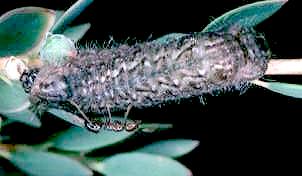
(Photo: courtesy of R.P.Field,
Museums Victoria)

| Fiery Jewel (previously known as Lycaena ignita) LUCIINI, THECLINAE, LYCAENIDAE, PAPILIONOIDEA | (donherbisonevans@yahoo.com) and Stella Crossley |

(Photo: courtesy of R.P.Field,
Museums Victoria)
The eggs of this species are round, white and flattened, with a diameter of about 0.8 mm. They are laid in spring in groups at the base of the foodplant, typically by the nest of the small black ants :
If there is no ant nest already at the base of the plant where the eggs are laid, the ants actually come and build one.
The Caterpillars are fawn and velvety, with a broad dark dorsal band, and zig-zag black and yellow lines. By day the caterpillars shelter in the ant nest, and are shepherded by the ants to the new shoots in the evening, and back to the nest at dawn. The caterpillars feed on a wide variety of plants, including:
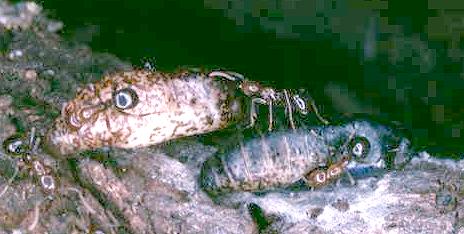
The pupa is a mottled brown, and normally occurs inside the nest of the host ants. It has a length of about 1.3 cms.
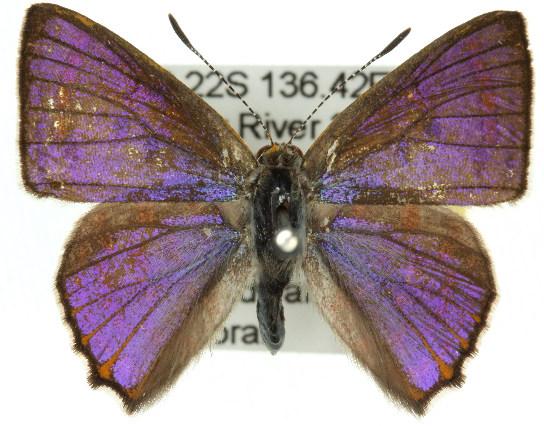
The adult male and female butterflies look very similar. On top, they are basically dark brown, with a blue iridescent sheen. The females have more rounded wings. The butterflies have a wing span of about 3 cms.
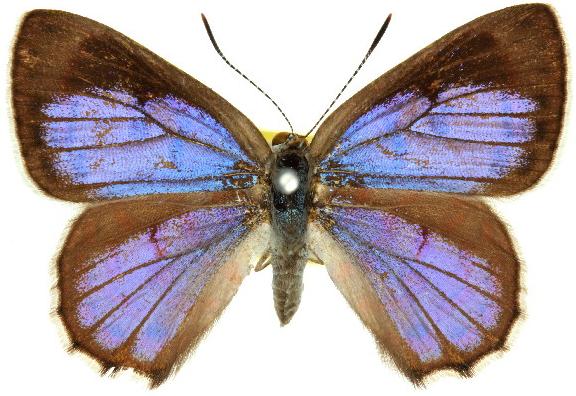
Underneath: they have patterns like flames: yellow with scarlet bands outlined in black, white, and iridescent green. This is presumably the origin of their scientific name, derived from 'ignis', the Latin word for 'fire'. There are also three or four black spots under each forewing.

The eggs are white, and shaped like partly squashed spheres, with minute dimples and spikes. The eggs have a diameter of about 1.5 mm. They are laid singly on a leaf or stem of a foodplant.
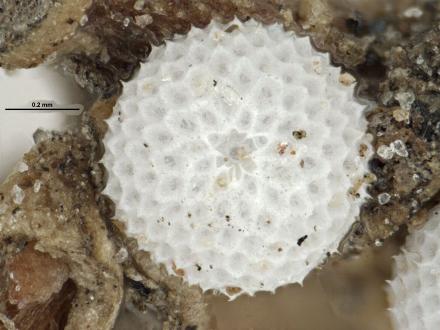
The species occurs as a number of races in
and around much of the coast of Australia, including
as the subspecies :
Further reading :
Michael F. Braby,
Butterflies of Australia,
CSIRO Publishing, Melbourne 2000, vol. 2, pp. 670-672.
William Elford Leach,
Hipparchia,
Zoological Miscellany,
Volume 1 (1814) p. 136, and also
Plate 60.
Buck Richardson,
Tropical Queensland Wildlife from Dusk to Dawn Science and Art,
LeapFrogOz, Kuranda, 2015, p. 227.
 caterpillar |  butterflies |  Lepidoptera |  moths |  caterpillar |
(updated 19 November 2012, 25 November 2025)